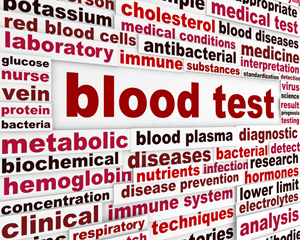Test Talk: GGT
Diagnostic value and sample requirements
by Dennis Ernst • August 07, 2019

Gamma-glutamyltransferase (GGT or gamma-GT) normally exists in low concentrations in the blood. While many organs produce this enzyme, elevations are primarily associated with liver damage or liver disease. It is also one of the first tests physicians order when suspecting problems with their patients' bile ducts. That's because GGT is typically the first liver enzyme to increase in concentration when bile ducts become obstructed by tumors or stones.
Both GGT and ALP are increased in liver diseases, but only ALP will be increased with diseases affecting bone tissue. Therefore, GGT can be used as a follow up to an elevated ALP to help determine if the high ALP result is due to liver or bone disease.
If the physician notices a high alkaline phosphatase (ALP) level on a patient, he/she may order a GGT to investigate the cause of the elevation. GGT and ALP are typically higher in patients with liver diseases, but only ALP is elevated when bones are affected by disease. Therefore, GGT is important in evaluating whether an elevated ALP is due to liver or bone disease. Cardiovascular disease and hypertension can also elevate GGT levels. Patients with high GGT levels are thought to have an increased risk of dying from heart disease.
GGT is conducted on serum samples. It is stable for 48-72 hours at room temperature prior to centrifugation, and up to a month once centrifuged and removed from the cells. Since GGT levels fall after eating a meal, some facilities require this test to be fasting. Since it is also used to assess alcohol abuse, some patients are asked to restrict alcohol intake prior to having their blood drawn for this test. Smoking also elevates GGT levels.
Bibliography
1. Lab Tests Online. American Association for Clinical Chemistry. AACC. www.labtestsonline.org. Accessed 8/6/2019.
2. CLSI. Procedures for the Handling and Processing of Blood Specimens for Common Laboratory Tests; Approved Guideline's Fourth Edition. H18-A4. Clinical and Laboratory Standards Institute. Document H18-A4 Wayne, Pennsylvania 2010.
3. Wu A. Tietz Clinical Guide to Laboratory Tests---Fourth Edition. Elsevier. St. Louis, Missouri. 2006.
Related Posts and Information
overall rating: my rating: log in to rate
collect GGT preanalytical requirements
